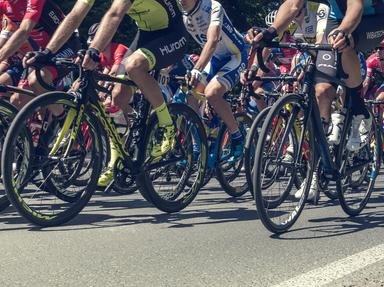Quiz Answer Key and Fun Facts
1. On April 20, 1980 the road cycling event usually known as 'Liège-Bastogne-Liège' was contested in such bad weather it was called 'Neige-Bastogne-Neige' (Neige meaning snow) by commentators. Which of the riders below battled the elements and won that race?
2. Which one of the cyclists below segued into cycling from skiing and won his first of three gold medals in the UCI Road World Championships at the age of 18?
3. In a three way photo finish, which of the cyclists below won the 1983 Giro di Lombardia?
4. Reminiscent of that Schleck/Contador moment in the 2010 Tour de France when Andy Schleck had mechanical problems, was a moment in the 1988 Giro di Lombardia. What cyclist made the decision to ride on thereby winning the race when his breakaway mate had a blowout?
5. In 1987 Stephen Roche won three individual time trials during the Tour de France as well as the triple crown of cycling.
6. In 1985 Greg LeMond finished second to Bernard Hinault in the Tour de France. LeMond also came in second to Hinault in the 1985 Coors Classic?
7. This cyclist who turned professional after racing five years as an amateur would later become the first American to win the Giro d'Italia. Who managed this feat at the age of twenty-six?
8. Francesco Moser is the only cyclist to win Paris-Roubaix three years in a row.
9. The Tour de France has been won by the same cyclist many times; however, this rider was first to win the Tour de France five consecutive times. Which of the listed greats below accomplished this grand feat?
10. Even though this man finished thirty-ninth overall in the the 1989 Giro d'Italia he was named Sports Illustrated 'Sportsman of the Year'. Which of the men below was the first cyclist to be presented with such an honor?
Source: Author
SmogLover
This quiz was reviewed by FunTrivia editor
gtho4 before going online.
Any errors found in FunTrivia content are routinely corrected through our feedback system.
